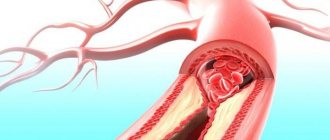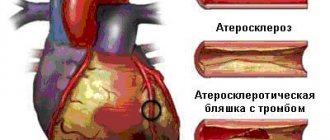A pathological condition in women during pregnancy, expressed by an excess amount of amniotic fluid (amniotic fluid), is polyhydramnios. According to statistics, pathology is observed in 1% of pregnant women.
The value of amniotic fluid is invaluable. It protects the umbilical cord from compression, and the fetus from various damage and noise, provides it with freedom of movement in the first months of development, and participates in metabolism. The rate of amniotic fluid at different stages of pregnancy is different, for example, at 14 weeks it is 100 ml, at 38 weeks it is 1000-1500 ml. If their number is significantly higher than normal, then they speak of polyhydramnios.
Polyhydramnios during pregnancy is of two types - acute or chronic. In the first case, excess amniotic fluid accumulates rapidly, in the second - gradually. Typically, acute is observed at 12-24 weeks, chronic - at 33-35 weeks. It can also be mild (the amount of water is slightly exceeded) or severe (the amount of water is greatly exceeded).
Causes of polyhydramnios during pregnancy
Amniotic fluid plays a significant role in providing a comfortable living environment for the unborn child. Thanks to the amniotic fluid, the fetus receives the necessary space for movement, it is not disturbed by external noises, temperature fluctuations, and is protected from the danger of mechanical stress.
In addition, this liquid is involved in the process of nutrition and gas exchange in the unborn child, as well as in maintaining normal hormonal levels and the formation of the body's defenses.
Amniotic fluid acquires particular importance during the period of immediate preparation for childbirth in the last weeks of pregnancy, since it ensures normal blood flow in the umbilical cord, protecting it from compression during increasing stress.
Despite the undoubted importance of amniotic fluid for the normal development of the fetus, its excessive amount is fraught with significant risks for the mother and the unborn child. Polyhydramnios can be diagnosed at any stage of pregnancy, but it poses the greatest danger in the last months. Typically, this condition occurs against the background of existing health problems in the expectant mother and requires special attention from doctors.
The main causes of excessive formation of amniotic fluid are:
- problems with the cardiovascular system;
- diseases of the kidneys and other organs of the genitourinary system, for example, pyelonephritis, cystitis, colpitis and others;
- pathologies of the endocrine system, in particular, diabetes mellitus is one of the first places in the frequency of provoking the development of polyhydramnios in the later stages;
- inflammatory diseases of various organs of infectious etiology, and these can be not only diseases of the genitourinary system, but also viral infections of the respiratory tract or bacterial damage to the gastrointestinal tract;
- pregnancy, in which a Rh conflict occurs between mother and child and hemolytic disease develops;
- carrying twins or a very large fetus, development of feto-fetal blood transfusion syndrome;
- problems in the child's development, for example, with the excretory system or swallowing reflex, as well as fetal hydrocephalus, cleft lip or palate.
Despite such an extensive list of factors that are a proven cause of the formation of polyhydramnios, in more than half of the cases the nature of the process of the appearance of an excessive amount of amniotic fluid remains unclear.
Polyhydramnios requires mandatory treatment, and most often it is carried out in a hospital setting.
We recommend reading the article about blood pressure during pregnancy. From it you will learn about normal, elevated and decreased readings, correct measurement and treatment. And here is more information about hematoma in the uterus during pregnancy.
Classification and symptoms
Depending on how quickly the volume of water increases, three types of conditions are distinguished in obstetrics:
- Chronic is a favorable type of pathology. In this case, there is a chance of carrying the baby to the expected date of birth. In chronic cases, it develops slowly, accompanied by minor clinical manifestations that can be effectively treated.
- Acute polyhydramnios is a pathology manifested in severe form. Characterized by rapid volume growth within a couple of hours. The acute form occurs at 16-19 weeks of gestation. This leads to a serious condition for the mother and her unborn child, and also causes miscarriage in the last stages. This condition is dangerous because congenital anomalies, serious complications, etc. appear.
Moderate polyhydramnios during pregnancy is a case when doctors identify a slight deviation from the norm, and the expectant mother should not experience any discomfort. With this diagnosis, a woman is able to calmly carry a baby and give birth naturally.
The presence of an unwanted disease can be indicated not only by the conclusions of the tests performed. But also some symptoms that a woman may experience:
- discomfort that appears in the abdominal area;
- weakness and malaise;
- shortness of breath even without physical activity;
- swelling of the limbs;
- severe stretch marks;
- sudden increase in heart rate.
Important! The presence of at least one symptom should force a woman expecting a child to urgently contact her doctor - a gynecologist.
Types of polyhydramnios
In medicine, there are several classifications of this pathology of pregnancy: it can vary in severity, in the nature of the course, in the reasons for its occurrence and in the impact on the woman’s health indicators. The most convenient way is to divide polyhydramnios into acute, chronic and moderate stages.
Acute
This type of disease is characterized by a sudden onset and rapid increase in the amount of amniotic fluid. This form of pathology is very dangerous for both the mother and the fetus, since it can lead to premature birth and cause severe congenital diseases in the child. In the most severe cases, acute polyhydramnios can result in fetal death.
Chronic
This form of polyhydramnios usually occurs in the middle of the third trimester of pregnancy and occurs without pronounced symptoms. Chronic polyhydramnios is the most favorable course of the disease, since the risk of premature birth in this case is unlikely, and with the right medical support, a woman has every chance of giving birth on time.
Chronic polyhydramnios does not cause any complaints in a woman and is most often diagnosed accidentally during a routine ultrasound examination.
Moderate
This type of polyhydramnios occurs quite often and is not considered a pathology, since it is not a consequence of any health problems in the expectant mother.
What are the dangers of this condition?
Every expectant mother needs to know that this pathology is quite dangerous for her and the baby. The amount of amniotic fluid increases sharply. This process takes from several hours to several days. This provokes difficulty in the circulation of fluid around the baby and complicates the normal excretion of its waste products and the supply of all important substances and oxygen.
The consequences of this condition may be as follows:
- frequent vomiting occurs, causing uterine tone;
- in a quarter of cases premature birth occurs;
- there is abnormal positioning of the fetus, which can cause traumatic birth;
- in some cases, damage to the fetal nervous system is observed;
- fetoplacental insufficiency, leading to impaired fetal development and even death;
- in the presence of an infectious disease, there is a risk of intrauterine infection of the fetus;
- in the later stages there is a possibility of late gestosis, which is dangerous due to intoxication of mother and baby;
- the risk of bleeding, which may lead to the need for emergency delivery and seriously threaten the life of the fetus and the pregnant woman;
- overstrain of the uterus, leading to a decrease in labor;
- in rare cases, it becomes necessary to terminate the pregnancy.
Obviously, excess amniotic fluid has serious consequences, so at times quite serious therapy is carried out in order to maintain the pregnancy and enable the woman to cope with the birth process.
But often in such cases, the birth of a baby naturally carries great dangers, so a caesarean section is performed - a fairly effective way to save the baby and mother with polyhydramnios.
Symptoms of pathology in later stages
The clinical manifestations of acute and chronic polyhydramnios differ significantly.
Acute polyhydramnios is quite rare in medical practice. The development of pathology can occur literally within a few hours, and its symptoms are manifested primarily by a sharp increase in the size of the abdomen. Upon examination, the doctor may detect high tone of the uterine walls and a rapidly growing amount of amniotic fluid.
A woman complains of sharp cutting pain in the abdomen and groin, radiating to the lumbar region. The pregnant woman experiences severe shortness of breath, and swelling is detected in the area of the anterior wall of the peritoneum. When listening to the fetal heartbeat, the gynecologist diagnoses an almost complete absence of heart rhythm, since it is drowned out by a large volume of fluid. It also becomes difficult to determine the outline of the fetus.
Polyhydramnios
The symptoms of chronic polyhydramnios are completely different:
- the volume of amniotic fluid increases gradually throughout the entire period of gestation;
- the first symptoms most often appear only in the last weeks of pregnancy;
- the abdominal circumference significantly exceeds the norm corresponding to the period;
- Numerous stretch marks appear on the skin of the abdomen;
- a gynecological examination reveals an inappropriate height of the uterus;
- a woman complains of pain in the lumbar region, which intensifies when the fetus moves;
- the uterus is constantly in good shape;
- general weakness of the body, increased fatigue, arrhythmia, tachycardia, shortness of breath;
- frequent urge to urinate and defecate;
- dilatation of the veins of the lower extremities;
- slightly muffled fetal heartbeat.
Often the clinical symptom of polyhydramnios is the turning over of the fetus and its adoption of an incorrect physiological position, for example, the buttock.
Expert opinion
Daria Shirochina (obstetrician-gynecologist)
Polyhydramnios in the last weeks of pregnancy requires urgent therapeutic measures to avoid premature birth and the development of intrauterine pathologies of the fetus.
How to deal with polyhydramnios in pregnant women
There is practically no way to prevent the occurrence of this pathology. It is important for a woman to follow the doctor’s recommendations regarding nutrition and lifestyle, and also closely monitor her general condition. At the slightest disturbance, and even more so when swelling appears, you should consult a doctor.
Treatment is carried out until the severe stage of polyhydramnios, that is, until there are disturbances in the breathing and circulation of the fetus from an increase in the volume of amniotic fluid. In such cases, a large set of procedures is used:
- the mother is prescribed a multivitamin complex, taking into account the individual characteristics of her health condition;
- medications are prescribed to normalize the condition of the placenta;
- drugs are used to restore uteroplacental blood flow, which ensures normal life support for the fetus;
- amniocentesis procedure for slow artificial removal of fluid - allows you to reduce the amount of amniotic fluid by 200 ml;
- antibacterial drugs are prescribed;
- Diuretic medications and herbal decoctions are used.
All this is done to help the body remove excess fluid and ensure normal renewal of amniotic fluid. This becomes the key to a successful pregnancy and prevents the baby from developing chronic diseases.
The purpose of these procedures is to help the body remove excess fluid and ensure normal renewal of amniotic fluid. This becomes the key to a successful pregnancy and prevents the baby from developing chronic diseases.
But during polyhydramnios, the condition of a pregnant woman can change very dramatically, so daily medical monitoring is carried out, which consists of weighing the expectant mother, as well as cardiotocography of the fetus.
Ultrasound and Doppler sonography are performed every 5-7 days. This approach allows doctors to comprehensively assess the condition of the mother and baby and, if necessary, carry out an emergency birth. Doctors also speed up delivery if the condition does not improve during treatment, but, on the contrary, worsens.
A pregnant woman should remember that it is necessary to inform the doctor about any observed deviations from the normal state. Ignoring this problem will not lead to anything good, and without the intervention of doctors the condition will not improve.
Specialists can now save 90% of pregnancies with polyhydramnios, so it is important to provide timely assistance to the expectant mother. In many ways, the success of treatment depends on how attentively the woman herself treats her condition.
The baby spends 9 months of intrauterine life in the uterus, as if in a small spa, surrounded on all sides by amniotic fluid. They protect the baby from any shocks and shocks, allow him to freely change his body position and “teach” him how to breathe and swallow correctly. But there may be too much amniotic fluid - and then the pregnancy is at risk, and the woman is diagnosed with polyhydramnios.
Consequences, what is dangerous for mother and child
Polyhydramnios in late pregnancy, especially if it occurs in an acute form, poses a direct threat to the health and life of the unborn child, since such a condition can cause premature birth and provoke the development of intrauterine pathologies in the fetus, often incompatible with life.
If a pregnant woman develops acute polyhydramnios, she is indicated for an emergency cesarean section, since placental abruption may occur as a result of a sharp increase in the volume of amniotic fluid.
In the chronic course of the pathology, the risks to the health of the mother and unborn child are not so significant, but in some cases women may develop the following complications:
- premature birth;
- dehydration as a result of prolonged vomiting;
- change in fetal position;
- insufficient oxygen supply to the fetus;
- pathological development of the internal organs of the fetus;
- placenta previa and its failure to separate after childbirth;
- heavy bleeding during childbirth;
- development of heart and pulmonary failure in a woman;
- weakness of labor.
In order to avoid the dangerous consequences of chronic polyhydramnios, a woman in the last weeks of pregnancy should be under constant medical supervision and strictly follow all recommendations.
Watch the video about the dangers of polyhydramnios during pregnancy:
Signs
There are certain signs, the presence of which will tell a woman about the presence of pathology. But a pregnant woman cannot always diagnose herself. With the chronic course of polyhydramnios, a woman often learns about the pathology only during the next examination by a doctor. In acute pathology, it is easy to notice that the stomach is growing very quickly. Its circumference at the level of the navel sometimes exceeds 120 cm.
A pregnant woman complains of the rapid appearance of stretch marks, fatigue, heaviness when walking, and shortness of breath. It is advisable to pay attention to unusual symptoms in order to maintain pregnancy:
- gurgling inside the abdomen;
- decreased activity of the child;
- severe swelling of the legs;
- feeling of pressure on the perineum;
- increased heart rate;
- malaise, weakness.
Acute
Excessive fluid accumulation can be diagnosed immediately. A sharp increase in the abdomen cannot go unnoticed, because the condition develops over a very short time. A pregnant woman experiences discomfort in the abdomen, pain in the lumbar area and groin area. The abdominal wall swells noticeably, and severe shortness of breath is observed. The woman does not hear the movement of the fetus, and listening to its heartbeat is very difficult. The rapid development of pathology may be accompanied by rupture of uterine tissue.
Chronic
In the case of chronic development of the disease, the increase in amniotic fluid occurs slowly. More often, doctors observe such polyhydramnios at the end of pregnancy. Excess fluid intake of a chronic nature does not have severe symptoms. Pregnant women manage to get used to a certain discomfort, associating it with their position, so diagnosing the pathology is difficult. For this reason, the chronic form of polyhydramnios is no less dangerous than the acute form and entails very unpleasant consequences for both mother and baby.
Diagnosis of the condition
If polyhydramnios is suspected, the doctor must prescribe an ultrasound examination to determine the amniotic index, which in the last trimester of pregnancy is 77-278 ml of fluid. If a woman has this indicator above the upper limit value in recent weeks, she is indicated for hospitalization even if she has no complaints of feeling unwell.
Also, using an ultrasound examination, the largest pocket of amniotic fluid is measured; if the value is more than 8 cm, a diagnosis of polyhydramnios is made.
To make an accurate diagnosis and determine a treatment regimen, it is necessary to conduct the following studies:
- a screening test to determine how well the body absorbs glucose to rule out or confirm gestational diabetes;
- advanced biochemical blood test to identify the presence of an inflammatory process of infectious etiology;
- amniocentesis, in order to determine the condition of the fetus based on the results of an analysis of amniotic fluid based on the waste products of the unborn child contained in it;
- cartotyping to determine possible genetic abnormalities in the fetus.
In some cases, cardiotocography is prescribed to clarify the diagnosis.
Consequences
With polyhydramnios, the following consequences are possible:
- premature birth or termination of pregnancy;
- fetal death or developmental defects;
- if the cause of polyhydramnios is an infection, then there is a possibility of infection of the fetus;
- prolapse of the umbilical cord or fetal arm (leg) during childbirth;
- the presenting part of the fetus does not descend during labor or is not fixed;
- malposition.
- bleeding;
- various gestoses.
Treatment of polyhydramnios in later stages
Therapy should be carried out in a hospital setting, since in particularly severe cases, a woman may be indicated for emergency termination of pregnancy by caesarean section.
If pregnancy can be maintained until the due date, a course of complex treatment is prescribed depending on the causes of the pathology, the degree of polyhydramnios and the general health of the woman.
In the most common cases, therapeutic measures boil down to prescribing the following drugs:
- B vitamins, tocopherol and vitamin C;
- diuretics, for example, Furosemide or Veroshpiron;
- antibacterial agents when an infectious agent is detected, broad-spectrum antibiotics are usually prescribed, for example Rovamycin;
- To improve placental blood flow, drugs such as Curantil, Trental or magnesium preparations are prescribed.
Expert opinion
Daria Shirochina (obstetrician-gynecologist)
The treatment regimen is selected strictly individually by the attending physician. Any independence with polyhydramnios in the later stages is unacceptable, as it can lead to death.
If doctors suspect a threat of uterine rupture, an amniocentesis procedure is performed, in which a small amount of amniotic fluid is drawn out of the amniotic sac using a special needle. Such an operation can be prescribed only in extreme cases, since it is associated with the risk of serious complications.
Treatment
Moderate polyhydramnios is treated by eliminating the cause of its occurrence. After passing all the necessary tests and examinations, the doctor will be able to determine the causes of this pathology. Therapy is prescribed comprehensively. It includes diuretics (diuretics), antibiotics and vitamins. They help reduce the amount of water, destroy harmful microorganisms, increase immunity and improve health. If treatment does not bring results, then in some cases labor is induced. This occurs no earlier than 35 weeks of pregnancy.
Participation of amniotic fluid in the birth process
In the first period of contractions, all the water is divided into two parts. The first part is located directly under the fetal head and rests on the cervix.
- A bubble with fluid stretches the uterine os and provokes dilatation of the uterus
- If there is insufficient water, the pressure on the uterine os is minimal, and accordingly, dilation occurs very slowly. The labor process slows down, the midwife notes weak labor activity. This condition is dangerous due to fetal hypoxia and various birth injuries. In this case, doctors resort to amniotomy, in other words, they puncture the bladder
- While the bubble bursts, water washes the woman’s birth canal, ensuring the baby glides during birth.
- The rest of the fluid continues to protect the baby until birth. It pours out at birth
During rapid labor, some children are born “in a shirt”; this is a fetal sac filled with water that has not had time to burst.
What problems can arise due to oligohydramnios and how to diagnose them?
In 50% of cases, pregnancy with oligohydramnios ends in premature birth.
- Due to lack of water, the baby is not protected from mechanical damage
- He cannot move freely inside the mother, and developmental delays occur.
- Club feet and spinal curvature in the fetus are often observed
- Often the walls of the placenta become fused with the fetus. This may result in fetal deformities
In order to prevent pathologies of fetal development in time, an unscheduled ultrasound is performed. If a child is diagnosed with some serious pathology, the pregnant woman is prepared for an abortion for medical reasons. If the cause of oligohydramnios is obesity, diabetes mellitus or some illness of the woman, treatment is prescribed. With minor oligohydramnios, the pregnant woman is treated on an outpatient basis; hospitalization is not required.











